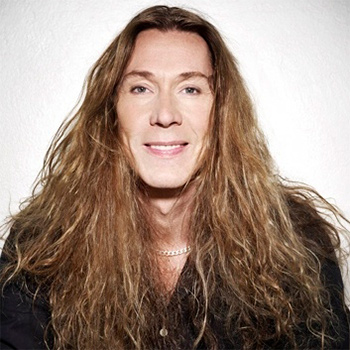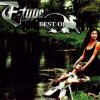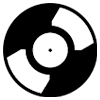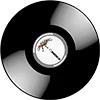
E-Type (real name — Bo Martin Erik Eriksson, born August 27, 1965, Uppsala, Sweden) is a Swedish musician, songwriter, and producer, one of the key figures of classic eurodance in the mid-1990s to early 2000s. He is the author of the international hits “This Is the Way,” “Set the World on Fire,” “Russian Lullaby,” “Angels Crying,” “Life,” and the official anthem of the UEFA European Football Championship UEFA Euro 2000 — “Campione 2000.” He worked with the Cheiron production team (Denniz Pop, Max Martin), whose methods defined the “Swedish” pop sound for years to come. His stage name is taken from the sports car Jaguar E-Type.
Early years and career beginnings
As a teenager, Eriksson was drawn to rock and metal: he played drums in the high-speed bands Maninnya Blade and Hexenhaus, later collaborated with Stakka Bo, and hosted on Sweden’s music channel ZTV. His first solo releases in the early 1990s went largely unnoticed, but in 1994 E-Type made a decisive turn to eurodance and entered the Cheiron studio.
Breakthrough: Made in Sweden and the E-Type formula
The debut album Made in Sweden (1994) delivered a breakthrough with several singles at once:
-
“Set the World on Fire” — the calling card of the early period;
-
“This Is the Way” — No. 1 in Sweden and a European radio phenomenon;
-
“Russian Lullaby” — a track with a memorable “Eastern European” melody.
E-Type’s signature formula took shape right then: energetic synth grooves, Erik’s semi-rap/semi-melodic verses, and powerful, “anthemic” choruses sung by Nana Hedin (with frequent video appearances by Jessica Folcker and Cheiron team backing vocalists on the recordings). The sound was helmed by Denniz Pop, Max Martin, Kristian Lundin, Rami, and others.
Evolution and peak popularity
-
The Explorer (1996) — cemented his status, deepened the use of choral hooks and rock-driven rhythmics.
-
Last Man Standing (1998) — commercial peak in Scandinavia (multi-platinum); singles “Angels Crying,” “Here I Go Again,” “Princess of Egypt.”
-
Euro IV Ever (2001) — includes “Life” and “Africa”, as well as the stadium anthem “Campione 2000”, the official song of Euro 2000 and a football stand standard.
-
Loud Pipes Save Lives (2004) — a return to heavy rotation: the single “Paradise” (appearance at Melodifestivalen 2004; 5th place in the final); tracks blend eurodance with light rock colors; features guest vocalists, incl. LG Petrov.
-
Eurotopia (2007) — a dance album with two big moments: the single “True Believer” and the contest entry “Line of Fire” (with The Poodles) for Melodifestivalen 2008 (the “Second Chance” round).
On stage, E-Type made long hair, leather outfits, and “Viking energy” unmistakable; in the studio, he crafted monumental, “stadium-ready” choruses over marching beats at 130–140 BPM. His tracks played everywhere from Central European clubs to football arenas and TV shows.
Side projects, rock vector, and a “second wind”
Despite his pop reputation, E-Type has solid rock roots. In the 2010s he regularly returned to heavier sounds, and in 2022 launched the metal project DAMPF (under the alias A-TRON), fusing muscular guitars, marching choirs, and electronic textures; the debut album The Arrival was backed by active live shows and appearances by well-known rock musicians. In the late 2020s the project continued to evolve, showing how eurodance-style chorus architecture can live organically in a modern metal context.
Style and influence
E-Type is one of the few artists who turned Eurodance into a “mass anthem” format:
-
a blend of danceloor motorik and rock-like dramaturgy (intro–build–drop, call-and-response between male verse and female choir);
-
concise, uplifting lyrics with minimal ornamentation;
-
the Cheiron production approach (wide lead synths, kick-in-unison sub-bass, layered choirs).
His radio hits and “Campione 2000” became a cultural code of the late 1990s/early 2000s, and his work with Cheiron is a key chapter in the “Swedish miracle” of pop music.
Awards and notable achievements
-
Swedish Dance Music Awards (1995) — three wins (“Best Artist,” “Best Song,” “Newcomer of the Year”).
-
Multiple platinum and gold certifications across Scandinavia.
-
Official UEFA Euro 2000 anthem — “Campione 2000.”
-
Two appearances in the national selection Melodifestivalen (2004, 2008).
Personal life
Since 2022 E-Type has been in a relationship with public figure Melinda Jacobs; in January 2023 the couple welcomed a daughter, Isadora. He lives in Stockholm, supports sports and charitable initiatives, and remains active as a writer and producer.
Key discography (selected)
E-Type studio albums
-
Made in Sweden (1994) — “This Is the Way,” “Set the World on Fire,” “Russian Lullaby”
-
The Explorer (1996) — “Free Like a Flying Demon,” “Back in the Loop”
-
Last Man Standing (1998) — “Angels Crying,” “Here I Go Again,” “Princess of Egypt”
-
Euro IV Ever (2001) — “Life,” “Africa,” “Campione 2000”
-
Loud Pipes Save Lives (2004) — “Paradise,” “Olympia,” “Forever More”
-
Eurotopia (2007) — “True Believer,” “Line of Fire” (feat. The Poodles)
Standalone
-
Campione 2000 — official Euro 2000 anthem (included on Euro IV Ever and special editions)
-
DAMPF — The Arrival (2022) — A-TRON (E-Type) metal project
Why E-Type matters today
-
His songs are a handbook on building working pop choruses — from harmony to layered vocals.
-
He bridged club culture with mass sport and TV, giving eurodance a long life beyond clubs.
-
The current rock project DAMPF shows a rare ability for relevant reinvention among ’90s stars without losing his recognizable melodic signature.
Conclusion
E-Type is a rare artist who helped turn eurodance from a club format into the language of stadiums and major TV events. His formula — marching beats, “wide” synths, male recitative in the verses, and choral, almost rock-like choruses — proved universal: equally effective on the dancefloor, on radio, and on the football terrace. The partnership with Cheiron (Denniz Pop, Max Martin) set a high production bar, while “Campione 2000” cemented E-Type’s status as an anthem-maker of his era.
At the same time, he always kept a link to rock and metal — from early drumming gigs to the later DAMPF project, where “Viking energy” and melodic flair took on a heavy, contemporary form. In the end, E-Type’s career is not only a catalog of ’90s/’00s hits, but also an example of a stable artistic identity capable of renewal without losing its signature.
Today his songs are ready-made case studies in how to craft effective pop hooks and durable melodies. And E-Type remains an important figure of the Swedish pop school: an artist who shaped the mass sound of his time and managed to carry it into a new musical reality.


